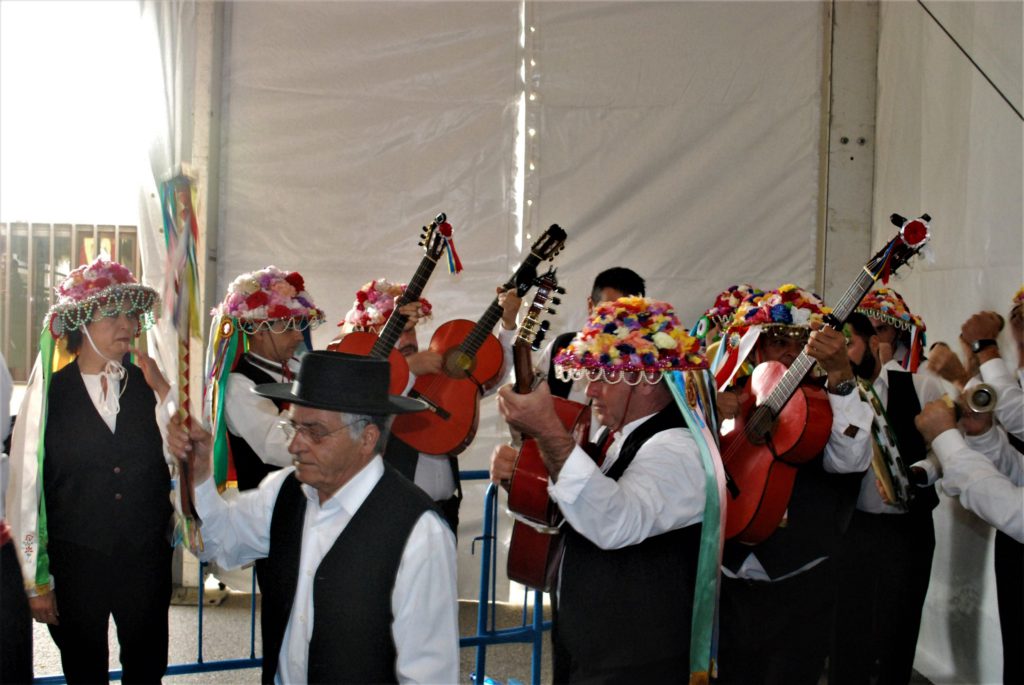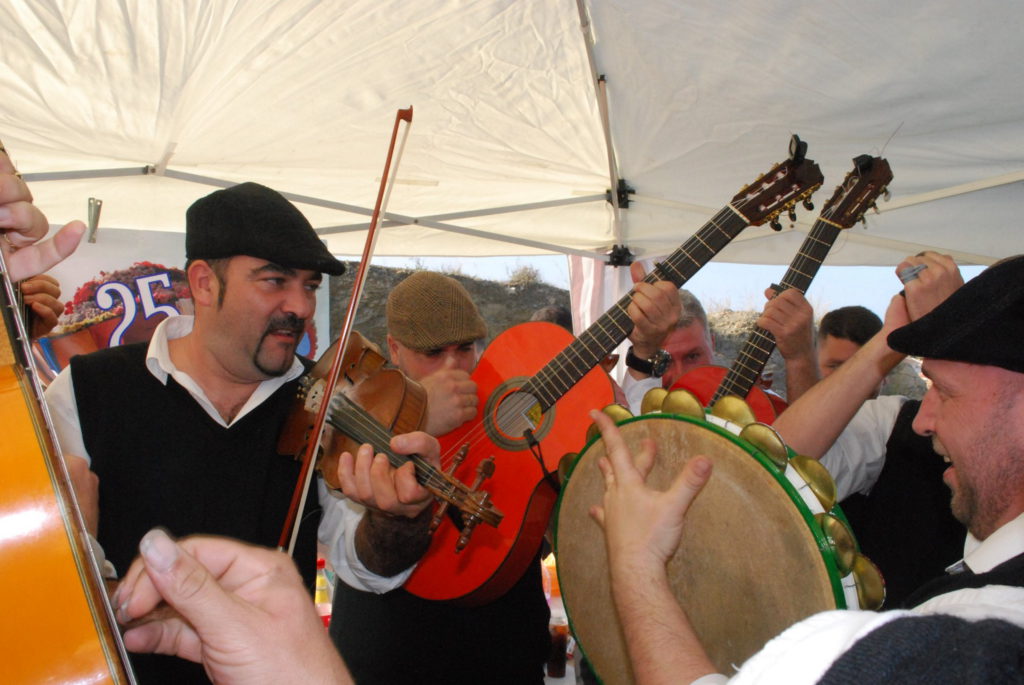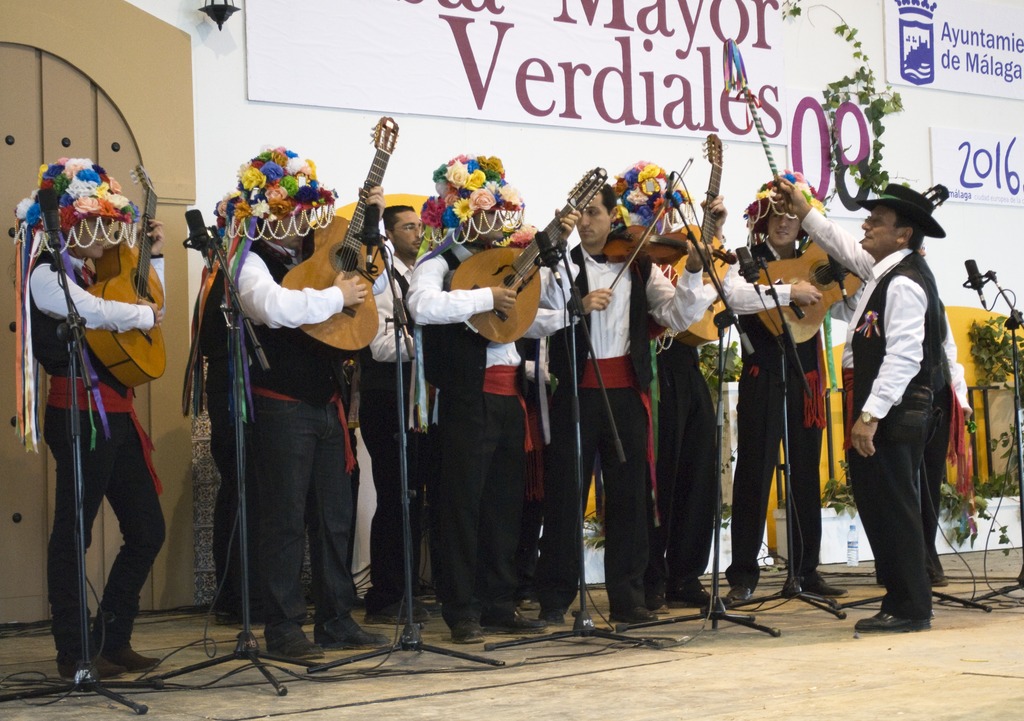Fiesta of Verdiales, in Málaga
Verdiales are a socio-musical manifestation of peasant origin, specific to certain regions of the province of Malaga: Axarquia, Valle del Guadalhorce and Montes de Malaga, and consist of a particular style of singing and dancing accompanied by a rondalla made up of a violin, two to four guitars, a tambourine, two or more zills, castanets and, in some cases, a lute or bandurria. The ensemble of musicians, singers (cantaores) and dancers (bailaores) is called Panda de Verdiales, and their performances are called Fiesta de Verdiales. A member of a panda is called a fiestero.
The origin of the word verdiales seems to be in the olive-growing region of Malaga, where a variety of olive called verdial is cultivated, because it is still green when ripe.
Verdiales arouse musicological and anthropological interest mainly for three reasons:
- Antiquity: According to flamencologists, verdiales are the most primitive form of Malaga fandango and almost certainly of Andalusian fandango.
- Purity: It is a peasant fandango which, as Luque Navajas says, “due to copious accompaniment, has evolved very little, still conserving its primitive nature, of an impressive rudeness and authenticity”.
- Vitality: Unlike other Andalusian artistic manifestations which have been denaturalised when their cultural context disappeared and they became academic, verdiales have continued to be passed down from father to son until the present day, making them a genuine example of living folklore.
Styles
Tradition has bequeathed to the present day three styles that are designated according to the geographical area where they have developed: Almogía, Montes and Comares styles, which are distinguished from each other by their instrumentation, rhythm, interpretation or distinctive playing.
Montes style is considered the oldest and best preserved because of its pure and genuine forms; Almogía style is the fastest of the three and covers the largest geographical territory, while Comares style is the richest from a musical point of view, its dance is very harmonious and the dancers have more possibilities for irregular postures.
Historical notes
Ancient history
Many ethnomusicologists agree on the Greek and Roman origins of verdiales, as there are vestiges, such as a Roman mosaic found in the ruins of Pompeii which represents the most suggestive proof of the antiquity and ritual connections of the Pandas de Verdiales, with archaic pre-Christian Mediterranean festivals. This is due to the similarity between the instruments, the way of performing and the costume of these pandas and the group of musicians depicted in the mosaic, entitled Scena comica con suonatori ambulanti.
Modern history
This period can be considered to span from the oldest audio-visual recordings of Verdiales (1950-1960) to the present day. It is at this time that the city of Málaga began to appreciate the fiesta, which some people considered to be “peasant stuff” so far. It has since become a symbol of the collective identity of the province of Málaga.
The municipalities where verdiales are most popular are Alhaurín el Grande, Almogía, Casabermeja, Málaga, Álora, Cártama, Pizarra and Comares

Panda de Verdiales Primera del Puerto de la Torre, estilo Montes. Fiesta Mayor 2018. Photo: Joaquín Macías.

Panda de Verdiales Jotrón y Lomillas, estilo Montes. Fiesta Mayor 2018. Photo: Joaquín Macías.

Panda de verdiales actuando en la Fiesta Mayor de Verdiales. Photo: Marc Ballester i Torrents. © Instituto Andaluz del Patrimonio Histórico
IAPH image under the conditions established under license cc-by 3.0 de Creative Common. https://creativecommons.org/licenses/by/3.0/es/

Panda de Verdiales Raíces de Málaga, estilo Comares en la Alcazaba de Málaga. Photo: Adrián Somodevilla.
Video. Panda de Verdiales Santo Pítar, estilo Montes. Author: Fundación Cuevas de Nerja.

